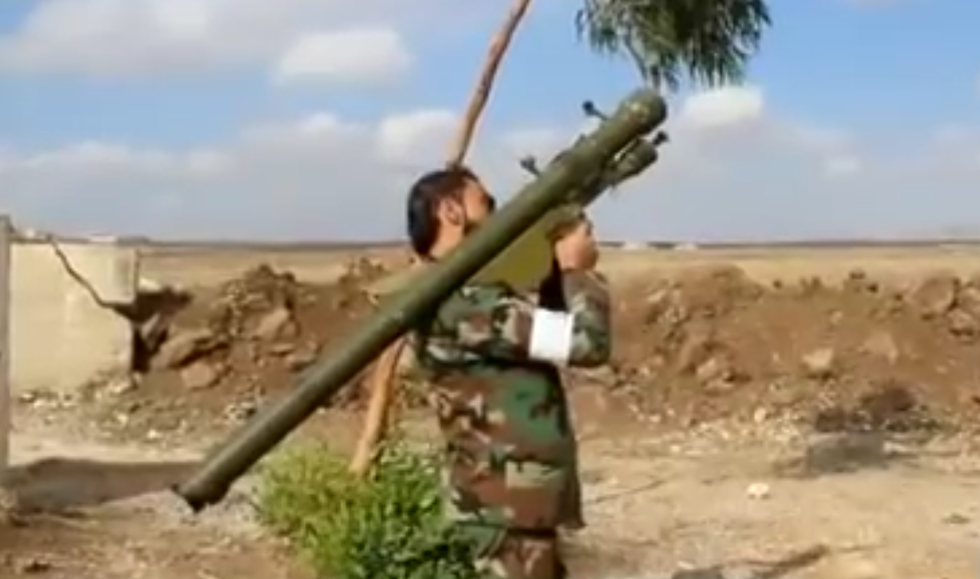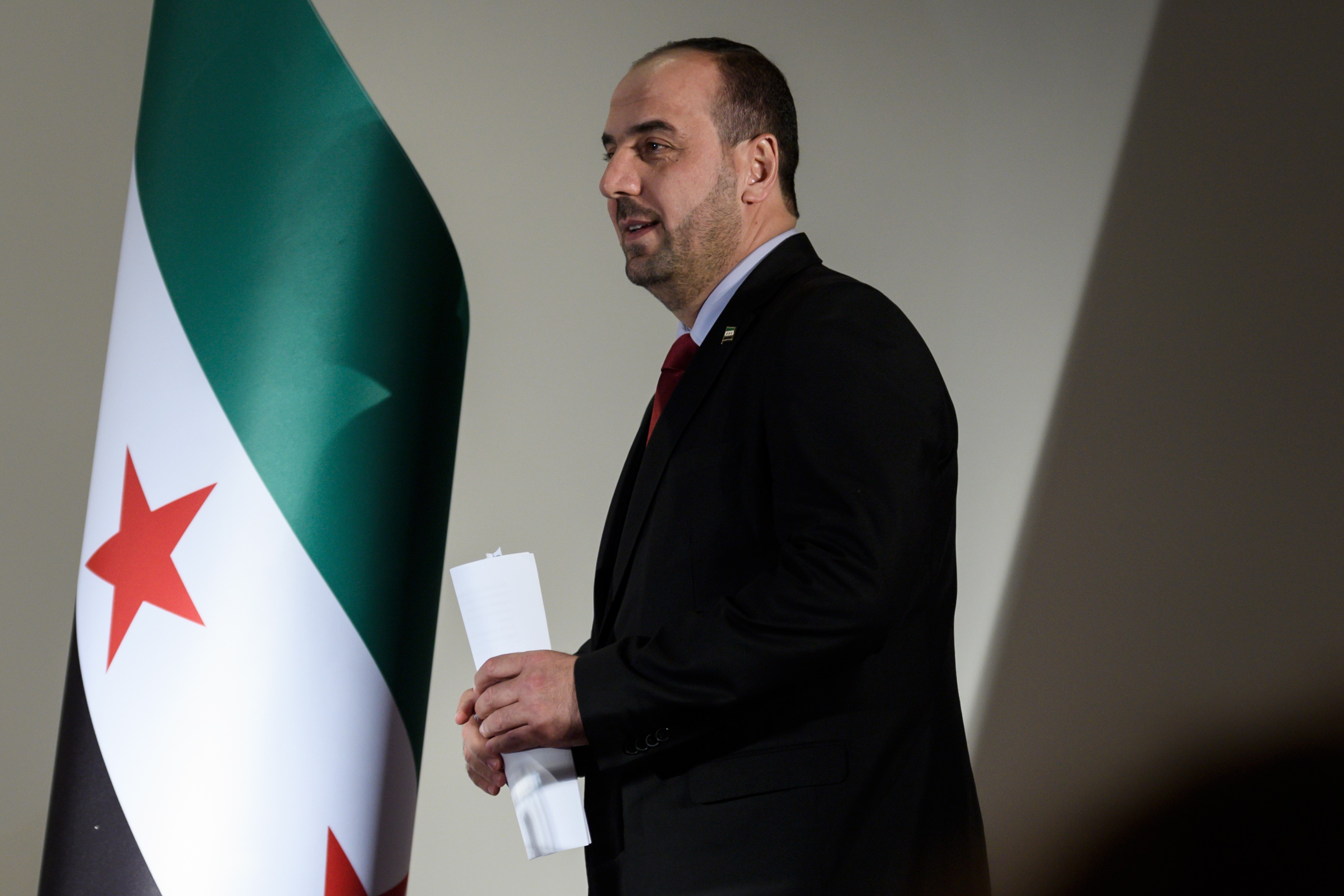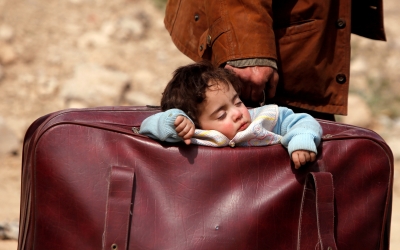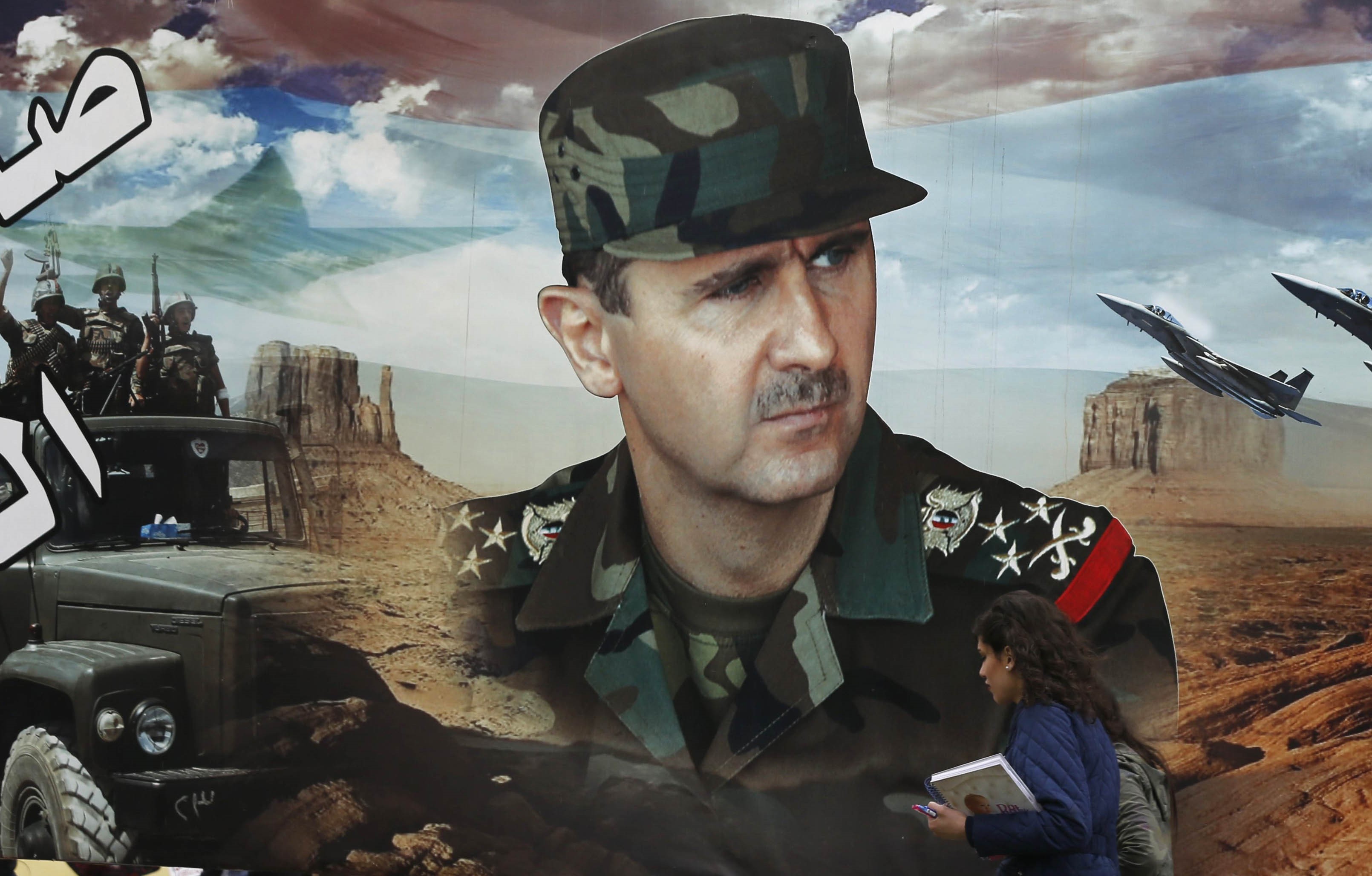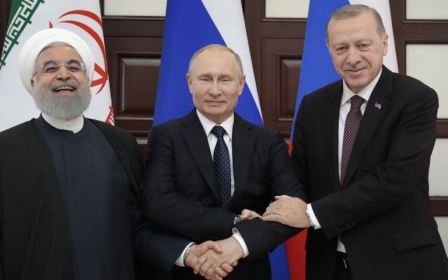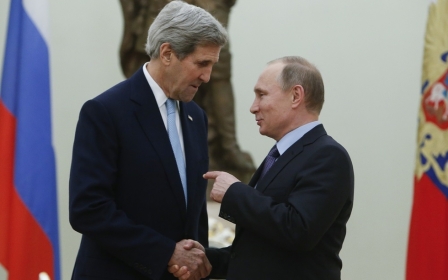Eight years on: Syrians' sense of betrayal will persist for generations
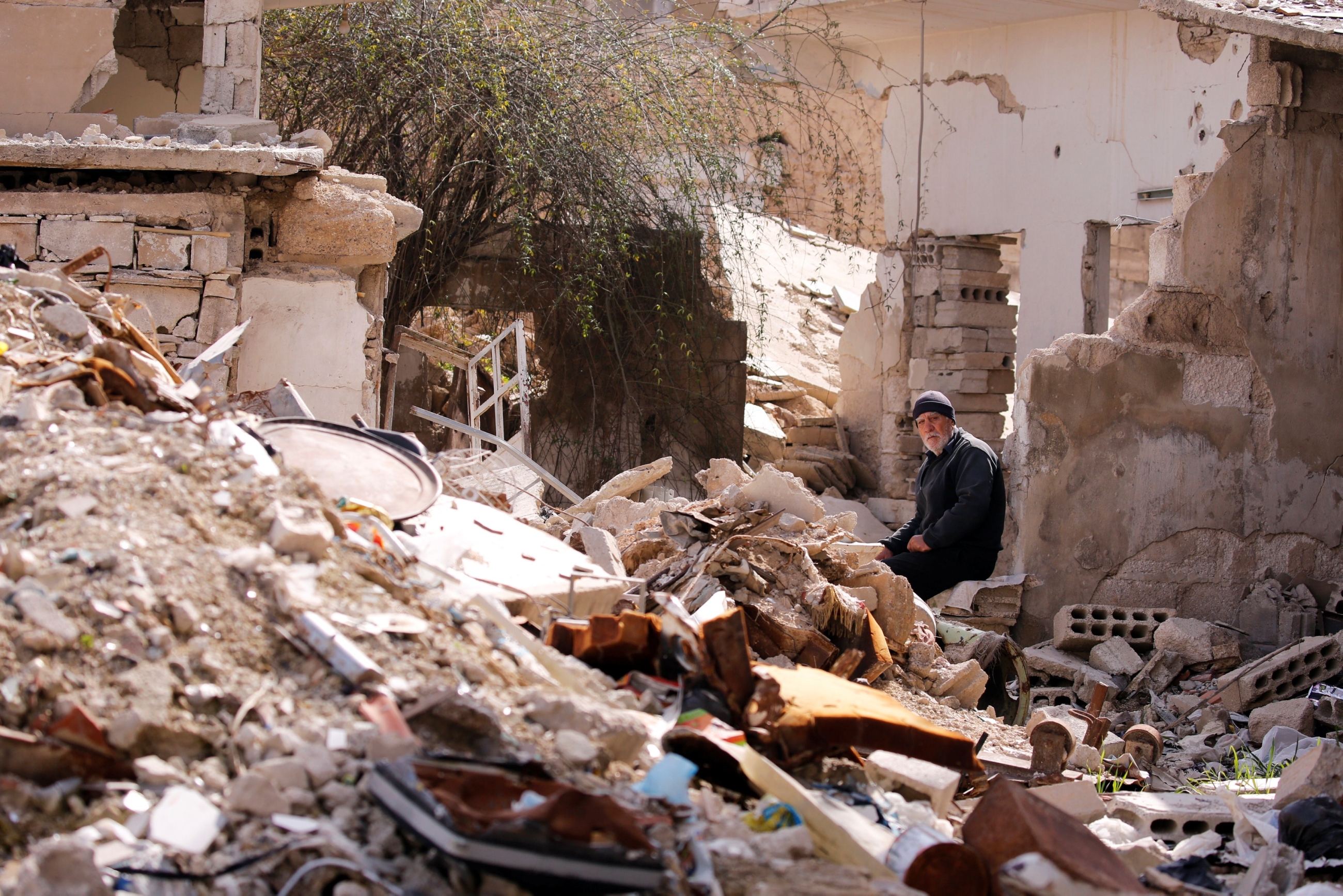
Friday 15 March marks the eighth anniversary of the beginning of the Syrian uprising. Certainly, the women and men who took to the streets beginning in March 2011 could not have imagined that their non-violent uprising would have fragmented so quickly.
Nor could they have foreseen the horrors of the next eight years when their imaginations were consumed with thoughts of a future of freedom and dignity.
A bleaker future
However, eight years later, Syria's future is bleaker than it has been at any point in the conflict. The descent into violence has produced an unmitigated humanitarian catastrophe that can never be undone and an emboldened regime intent on imposing its own forms of peace and reconciliation in the absence of political compromise or negotiation.
Eight years later, Syria's future is bleaker than it has been at any point in the conflict
Indeed, the forms of "peace" emerging in Syria portend future generations of violence and instability. These realities are so far removed from the political possibilities envisioned by those who took to the streets eight years ago.
New MEE newsletter: Jerusalem Dispatch
Sign up to get the latest insights and analysis on Israel-Palestine, alongside Turkey Unpacked and other MEE newsletters
The path to today was not pre-ordained, of course. Rather it is the outcome of a series of betrayals, interventions, and strategic commitments (and reversals) by the subjugating actors that moved the larger political and military battlefield dynamics in different directions.
Many Syrians have taken to thinking of the uprising as a generational process that will manifest in the near future when Syrians, who have been awakened by the events of the last eight years, will finally realise the goals of the early protesters.
Whether or not this will materialise is peripheral to the larger question of how we arrived at this place, and what the past years may tell us about Syria’s future.
How we arrived here
In retrospect, the uprising was stillborn. While there may have been a national sentiment and a national momentum that united the various factions of the uprising, there were insurmountable obstacles to cohesion and unity.
Without any contemporary experience in mobilisation and activism, networks of solidarity had to be constituted from existing social structures (often familial) or from scratch.
The negative effects this had on the organisation of the uprising were profound; most local councils that emerged were simply too localised to extend themselves into other parts of their governorates, mistrust permeated early forms of organisation between individuals and social groups that had virtually no history of working together politically, and resources were extremely limited.
The uprising was atomised from the start and unable to come together in a cohesive expression that could have posed a more serious threat to the regime
For all intents and purposes, the uprising was atomised from the start and unable to come together in a cohesive expression that could have posed a more serious threat to the regime.
There was an internal instability to the early organisation of the uprising that prevented any forms of centralisation. Indeed, there were expressions of the uprising throughout the country, and this gave the uprising a national character, but all efforts to coordinate, centralise, and link the various strands of the popular movement failed.
But they did not fail out of a lack of effort on the part of the non-violent activists, although internal dysfunction and fragmentation had a lot to do with this. Rather, there were two other developments in the early stages of the uprising that contributed to this failure.
Why the uprising failed
The first was the emergence of an armed movement within the country by late 2011 in the form of the Free Syrian Army (FSA). The FSA never resembled a national army in its command structure. It rather functioned more as localised fighting units resisting state violence. The presence of the FSA provided the regime with the military justification for its continued repression of protesters.
It was clear from the beginning of the uprising that the regime was unwilling to compromise politically with elements of the uprising through negotiations. A military solution was always favoured by the regime, and the militarisation of the uprising – a natural outcome of months of severe repression – put the conflict beyond the realm of political negotiations.
The second development was the emergence of a political leadership in exile in the form of the Syrian National Council (SNC). The SNC provided Western and Arab governments with a political partner to implement their Syrian policy at the expense of Syrian-based opposition.
The SNC attempted to articulate unity and cohesion between it, the FSA, and the internal, non-violent opposition. But this masked the weaknesses that plagued the SNC and its future incarnations.
Continued in-fighting and bickering among opposition factions and their manipulation by Western and Arab sponsors prevented them from being anything more than a mouthpiece far removed from the everyday of the conflict.
Hijacking the revolution
It is no wonder that many figures of the internal Syrian opposition loathed the external opposition and accused them of trying to hijack the revolution.
The SNC also provided a convenient outlet for Western and Arab policymakers to show that they were active on Syria without substantively supporting those inside the country who were trying to mobilise and organise society.
In the early years, the internal and external opposition and the FSA were unable to produce the desired goal of regime change. Internal divisions and mistrust as well as the shoring up of the regime by its own allies ensured that a political and military stalemate took root from around 2013-2015.
All international efforts through the Geneva Process to bring the various factions to the negotiation table failed. All parties and their patrons preferred to settle things on the battlefield.
A series of conflicts
But the battlefield itself was in gridlock. By 2013, Syria had become a magnet for new armed groups. The FSA was no longer the main actor as various Islamist and other armed groups emerged in Syria, many of whom were far removed from the goals and ideals of the uprising.
The meta-conflict over whether the regime would stay or go was increasingly being sidelined for smaller conflicts and battles; the Syrian crisis evolved into a series of intersecting and entangled conflicts that became difficult to unwind.
Foreign intervention fuelled violence and the proliferation of armed groups. But these same actors had contradictory policies even if they were ostensibly supportive of one side or the other.
Turkey, Qatar, and Saudi Arabia, as the main patrons of the armed opposition, often competed over which leaders and brigades would exercise power within opposition structures.
Similarly, Hezbollah, Iranian and Russian policy did not always cohere on how to approach the battlefield dynamics. Economic contraction propelled human displacement from violence, and the emergence of war economies incentivised violence and made kidnapping, looting and taxation a source of livelihood.
A deliberate policy
The international community never demonstrated a serious commitment to supporting the uprising or, in later years, to a political process, and this contributed to stalemate as well. Western governments, first among them the Obama administration, were intent to play both sides to maintain as much strategic and political parity as possible.
Western policy was not unintentional; it was deliberate. And these policies deliberately stifled the Syrian opposition
The rebels and the non-violent protesters were always promised support. Resources were always forthcoming. But they were never the resources they wanted. And training programmes were dismantled as quickly as they were created. Similar entanglements occurred with the political opposition.
Many Syrian opposition actors complained that Western governments continuously imposed unrealistic expectations on them that deflected from their main goals.
The point here is not that Western governments should have done more, which many are now arguing about the Obama administration; rather, the point is that their forms of intervention actively undermined and delegitimised Syrian opposition actors. Western policy was not unintentional; it was deliberate. And these policies deliberately stifled the Syrian opposition.
Strategic and temporary
Western and Arab interests in Syria were always strategic and temporary. There are almost too many examples that demonstrate this: the American abandonment of Kurdish allies, the Qatari-Saudi withdrawal of support for armed groups, the Turkish reconciliation with Russia and Iran expressed in the Astana process, the withdrawal of Arab military forces from the American-led coalition against Islamic State group, and so on.
The support of the regime's allies, on the other hand, has been consistent. Of course, there are many conflicts and tensions between Russia, Iran, Hezbollah, and the regime. But the larger point is that the regime's allies were not willing to risk its collapse under any circumstances.
And this is what propelled direct Russian military intervention into the Syrian conflict in September 2015, the military decision that ended the stalemate.
More than three years after that intervention began, the Syrian regime and its allies have claimed victory in the conflict. The armed opposition's patrons slowly abandoned them once the intervention began.
The conflict became too costly, too uninteresting, as other regional developments vied for the attention of Qatari and Saudi leaders.
Syria’s future should lie in the hands of Syrians, not tripartite powers meeting in Astana, or uninterested world leaders meeting in Geneva
Turkey began to accept the new realities of the battlefield as more opposition-held territory fell under regime control and began to coordinate, politically at least, with Russia and Iran through the Astana process.
This has effectively placed Syria under tripartite suzerainty. The Syrian Kurdish political project, a threat to both the regime and Turkey, became a convenient excuse for cooperation if not reconciliation.
Turkey's remaining allies are dozens of armed groups concentrated in Idlib governorate after a series of "reconciliation" agreements forced their displacement there. They are likely to be abandoned soon.
A post conflict order
Under the guise of reconciliation, the Syrian regime is imposing a post-conflict order that ensures the persistence of enmity, violence, and erasure. There is no plan to repatriate refugees; instead there are plans to appropriate their properties.
There is no serious plan for reconstruction; instead there are new laws being enacted to ensure that elites enrich themselves through reconstruction.
The Syrian regime has to contend with discontent, to be sure. Today, reconciliation in Syria will not bring about healing and peace but only appears to be cementing the insurmountable loss that all Syrians, regardless of politics, have suffered.
The sense of betrayal and abandonment that many Syrians have felt over the last eight years will persist for generations to come. Caught in the middle of the conflict were a people, an entire generation, who have been robbed of the opportunity to live secure lives.
If the will of many Syrians manifests and this is indeed the first eight years of a long, generational uprising, then there are many lessons to be learned from March 2011 until the present day.
Among them is a simple fact that we often tend to overlook: Syria's future should lie in the hands of Syrians, not with tripartite powers meeting in Astana, or uninterested world leaders meeting in Geneva.
No good can come of a future in which Syrians are not the central deciders in their future. The past eight years have proven that correct.
The views expressed in this article belong to the author and do not necessarily reflect the editorial policy of Middle East Eye.
Middle East Eye delivers independent and unrivalled coverage and analysis of the Middle East, North Africa and beyond. To learn more about republishing this content and the associated fees, please fill out this form. More about MEE can be found here.




